Updated: 03-Mar-2022
Although in 1910 a water-cooled, 45 hp De Havilland engine with 4 horizontally-opposed cylinders appeared on biplane number 1 of the same brand, the activity of manufacturing engines as "De Havilland Engines Co. Ltd." began in 1927 .
-They built a large family of piston engines called "Gipsy".

“Gipsy family”
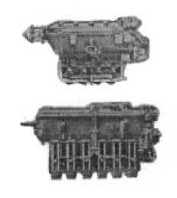
“Gipsy family”
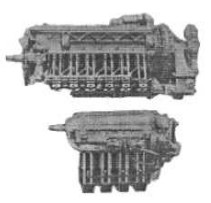
“Gipsy family”
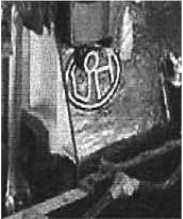
"DH logo on engine block"

"F.B. Halford"
-And he did it together with the already known major F.B. Halford, with the collaboration of the then captain De Havilland. It was an engine derived from Cirrus, which in turn was derived from an old Renault engine: the lightweight Gipsy 1.
-In fact, the first experimental engine appeared in July 1927, with a power of 135 hp, installing it on the DH-71 aircraft that was the first Tiger Moth, winner of a speed record for light aircraft, established in 186 mph
-The initial production of engines was carried out at a rate of 20 a week.
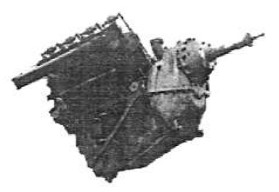
"DH - V8"
-In 1928-29, the DH-75 Hawk Moth made its first flight, powered by a "Gipsy Ghost" in a V8 crankcase and giving 198 hp. The engine was based on Renault and Airdisco engines.
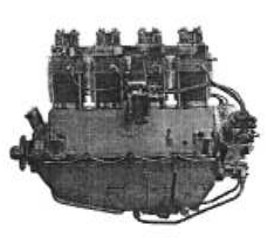
"Gipsy I"
-The Gipsy I had upright cylinders like the Gipsy II. Both were used in some versions of the DH-60 aircraft.
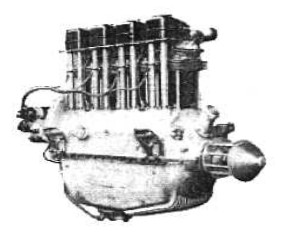
“Gipsy II”
-The first Gipsy engine with inverted cylinders was model III from 1930. It gave 120 HP.
-They were installed on the DH-60G and DH-80.
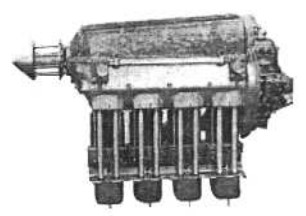
"Gipsy III"
-The Gipsy Major I of 1932 were mounted on the Tiger Moth DH-82a although they first used the Gipsy III.

"Gipsy Major I"
-The Major I gave 130 hp. This engine was also built under license by Alfa Romeo, being known as Alfa 110-1 and used in the Ambrosini Griffo.
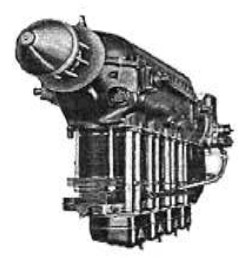
"Gipsy Six I"
-For 1934, the DH-88 Comet won the England Australia race in 71 Hrs. This aircraft registered G-ACSS and called "Grossvenor House", had two DH Gipsy Six racing, high compression engines.
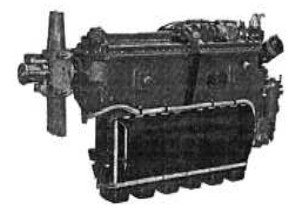
"Gipsy Six II"
-The Six engines were also mounted on the DH-85a, 86 and 92 (Six I and II). The Gipsy Six II began his career in 1935.
-Now we show a better view of the Gipsy-Six that gave 205 hp at 2,350 rpm. its best operating condition was at 2,100 rpm, giving 184 hp.

"Gipsy-Six"
-A little known, but very outstanding engine was the supercharged inverted V-12 with 525/545 hp and known as the "Twelve". It was from 1937 and has been mounted on the DH-91 plane.

"Gipsy Twelve"
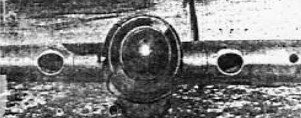
"Power Egg on the Twelve"
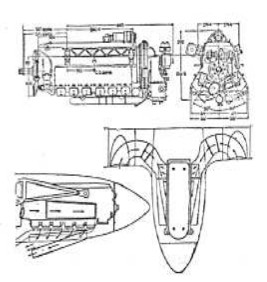
"Twelve installation"

"Installing a Twelve"
-When the "Twelve" was installed on the DH Ambassador, it adopted the name "rifle bullet" due to the extremely clean fairing.
-The air inlets for the cooling of the two cylinder rows were made by two intakes on the leading edge of the wing. The air flowed out through an adjustable hatch under the bonnet, after having passed between the cylinders.
-We expand the knowledge we have about this brand with ads that appeared during the most fruitful period, around WWII.
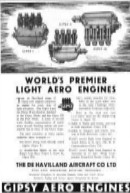
"The Gipsies in the 1930's"

"Gipsy Six in 1937"
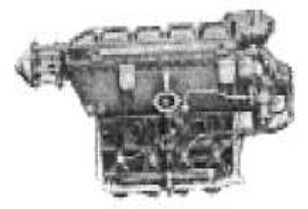
"Gipsy Minor"
-The "Minor" from 1938, gave 40 hp and was installed on the DH-94.
-The 525 hp Gipsy King is from 1937 and had been mounted on the DH-93.
-The King series weren't as successful as the Twelve. The main difference was that the King was water cooled.
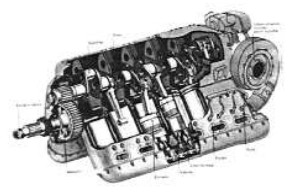
"King with supercharger"
-The Major series engines, like the others, had a varied range of models: IC, IV, V, IF, VII, II, IIa, 10, 31, 51, etc.
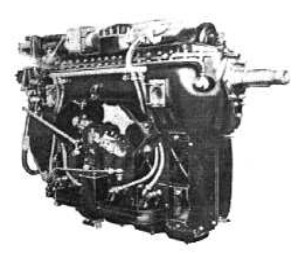
"Major 31"
-From the II and IIa 4-cylinder Major series and the Six II and III Ex series, Queen I and II, they derived the superior series 30, 50 and 70.
-In turn these Queen engines would give birth to the 4-cylinder Major 31 and 51, and the 6-cylinder Queen 31, 51 and 71.
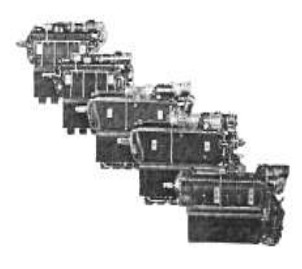
"Gipsy Queen 31 to 71"
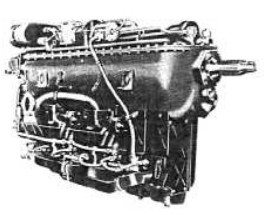
"Gipsy Queen 31"
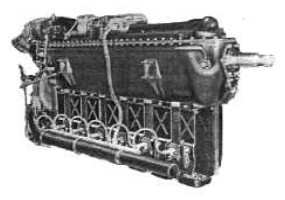
"Gipsy Queen 51"
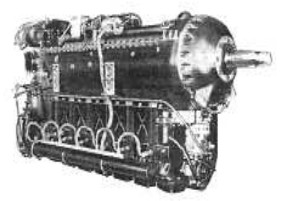
"Gipsy Queen 71"
-The difference between the Gipsy Queen 51 and 71 is that the latter is geared.
-After WWII, Queen model 31 was mounted on the DH-104 Dove.
-The use of Gipsy engines reached maximum extremes, as in the case of the turbocharged Major 215.
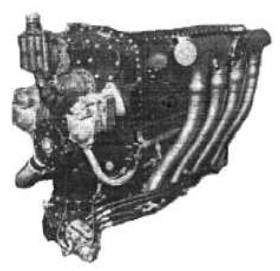
"Gipsy 215, without turbo"

"Gipsy 215 con turbosobrealimentador"
-The de Havilland engines passed to the Hawker Siddeley group, then to Bristol Engines (1960) and finally to Rolls-Royce in the latest readjustment of the British aeronautical industry.
-With the arrival of the reaction engine era, De Havilland Technical Director, Mr. Halford himself was also in the beginning of the study and construction of turbines, around 1941.
-Testing the H-1 (Halford-1) in 1944, and at the same time being a pioneer since in 1945 this was the turbine that obtained English Certificate No. 1.
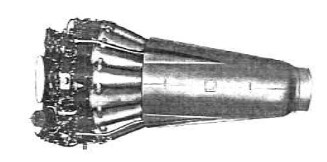
"DH Goblin"
-It was called Goblin and flew on the DH-108 "Swallow", but its adaptation to "Vampire" is known better.
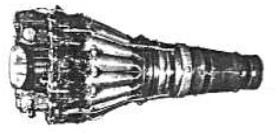
"DH Goblin"
-The Goblin II version, like the initial one, had one centrifugal single-sided compressor, 16 separate combustion chambers, a single turbine, but only 3,000 lbs. of thrust at 10,200 rpm. The first Swedish jet aircraft flew for the first time in 1947 with a Goblin.

"DH Ghost"
-Derivative of the Goblin II is the Ghost with 5,000 lbs. of thrust at 10,000 rpm. It was the H-2 that was intended for the DH-109 "Comet", the first four-engine jetliner.
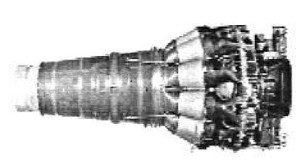
“Ghost”
-For a long time it was the most important and heavy existing turbine.
-When the famous Comet series of accidents happened, the Ghosts were the power plants. Later, the Comet IV would carry the "Avon" of Rolls-Royce.

“Ghost”
-The H-3 (read Halford-3), 500 hp was a turboprop with two single-sided compressors and several inverted-flow combustion chambers.
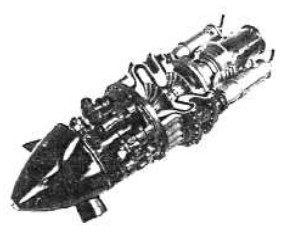
"De Havilland H-3"
-The famous DH "Gyron" engine series started with the H-4. The H-5 was a development of the H-2.
The H-6 was the DH Gyron Junior and the H-7, based on Napier's "Oryx" with a strong compressed air outlet for propeller blades and helicopter rotors.

"Gyron family"
-The turbo jets that created more expectation for De Havilland have been the "Gyron" engines. The Junior DGJ-1 gave a power of more than 3,200 Kgs. of thrust (1954).

"Gyron"
-The DGJ-2 was tested in the Canberra aircraft and was intended for the Bucaneer, with one singularity, a percentage of the air was "bleeding" and was used to "blow" the flaps. The DGJ-2 was also called PS-43.
As an anecdote, in the magazine "The Airplane" of Nov. 1944 appears a letter about the term "Gyron"
- "In view of the fact that the term Gyron appears to be used in usual vocabulary and this being applied in a general way to power units of gas turbine jet propulsion, we have taken this opportunity to inform you that the used word is a registered -Trade Mark- and apply to products from this organization only"
Signed: WEP Johnson.
Power Jets (Research and Development) Ltd.

"DGJ-2"
-As we will see Power Jets was another path of turbine development in the UK that would end in the Rolls-Royce area. However, the term Gyron has been associated with De Havilland only.
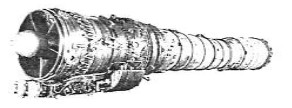
"DGJ-10"
-The Gyron engines had axial flow compressors instead of the initial DH centrifugal ones.
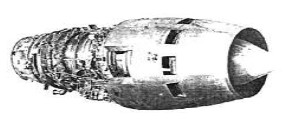
"DGJ-10R"
-In 1957, the DGJ-10 with 10,000 lbs. dry was developed for 19,000 Lbs. with afterburner in its version DGJ-10R (R of Reheat). Below we see this engine in two parts: engine and afterburner. It was destined to the experimental Bristol T-188 airplane with a speed of 2'5 Mach that did not prosper.

"Afterburner of the DGJ-10R"
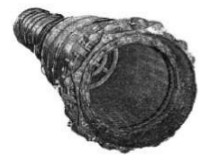
"Rear view of the engine with the same afterburner"
-In the illustration above you can see the afterburner of the Gyron Junior DGJ-10R. It was tested on a Bristol Javelin before being installed on the T-188.
-The DGJ-20 was a developed version of the DGJ-10. The PS-26-6 and PS-26-3 Gyron from 1955 that gave 23,900 lbs. with afterburner were the DGJ-20.

"PS-26-6"
-The "Gyron Senior" was a still more powerful private trial of the Company, around 1953.
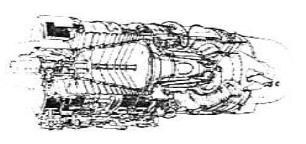
"Gyron Senior"
-Gnôme turboshafts and turboprops are a successful family, they were manufactured in the USA under license as GE T-58.
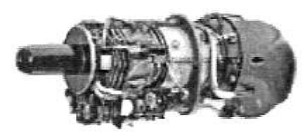
"Gnôme"
-In the DH Gnôme P1000 turboprop or P-1200 references the "P" stands for Propeller and therefore its power was given in SHP.
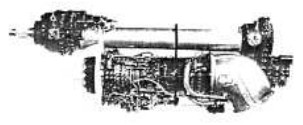
"P-1000 / 1200"
-The models H-1000, H-1200 and H-1400 were turboshafts, with "H" for helicopter and its power.
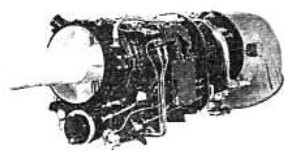
"H-1000"
-In the field of rocket engines, De Havilland had two important models as well: the "Sprite" and the "Specter".
![]()
"Sprite"
-The "Sprite" was considered a "cold" rocket, using hydrogen peroxide as monopropellant. It was destined to the Comet I to assist takeoff in hot weather (Project of the year 1949).
![]()
"Super Sprite"
-The "Super Sprite" added kerosene and was intended for military use, such as ATO (Assisted Take Off, words equivalent to the American JATO or Jet Assisted Take Off)
-It was destined to Vickers Valiant bombers.

“Double Spectre”
-The "Specter" was already destined in addition to the Valiant, to the Handley Page Victor. The "Double Spectre", was intended for the guided missile Blue Steel and as an engine for strategic military vehicles. The fuel was HP and kerosene.
- HP is hydrogen peroxide. At the beginning of the 1950's, the start by auxiliary motor based on a turbine driven by the exhaust gases produced by the decomposition of hydrogen peroxide was a novelty.

"50 hp starter unit"
-Oxygenated water in high concentration could also be used. It was really small with a length of 20 cm, a diameter of 20 cm, and a weight of 10.5 kg.
-Another 50 hp model, working with the same fuel, was the so-called "Turbo Starter", with dimensions of 39 cm long by 15 cm in diameter. It could start the largest turbojet engine of the time in 10 seconds with a consumption of 5 kg of hydrogen peroxide.

"Turbo Starter"
-Remember that shortly before this, the start of some British engines had turbines that rotated with the gases from the firing of Coffman cartridges, which was more limited.
-To finish we show some advertisements of the time on De Havilland jet engines.
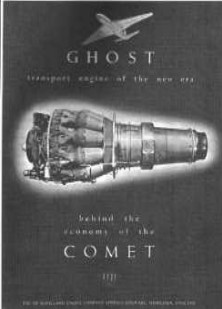


“Ads from the 1950’s”
From Appendix 6: A horizontally-opposed, four-cylinder engine has appeared in an old publication. We were aware of its existence but without any illustration. Thanks to the English magazine Flight (PeT) we can now show three photographs and a drawing. This engine is built by Iris Car. (See Iris too).


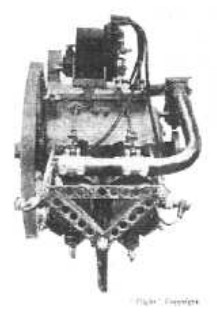
"Three views of the De Havilland Iris engine"
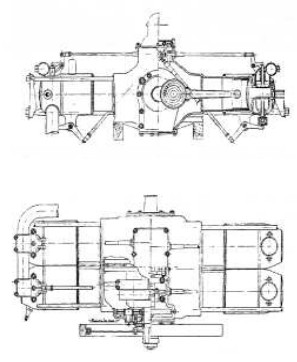
"Diagrams of the same engine"
-And two photos of the Gipsy Major 200 Series and as it was exhibited at the 1955 Paris Air Show.

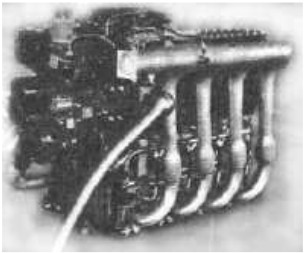
“De Havilland Gipsy Major, 200 Series”
-With fuel injection equipment.
-The difference between Gyron and Gyron Junior regarding size is appreciated in the illustration below.
-The Gyron Junior is 2/5 less in size than the greater Gyron, as we see below.

"The Gyron and the Gyron Junior"
-In the Gyron version 2 the inlet was segregated into two concentric parts as we see below. It is the DG-2.
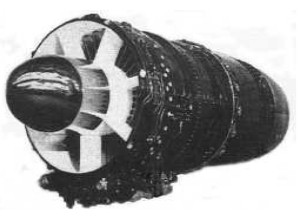
"De Havilland DG.2"
From Appendix 7: In the early days, the famous builder Geoffrey De Havilland used his own engine, the 45 hp Iris. Designed by himself.
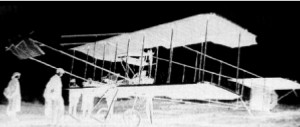
“De Havilland 2 biplane” (PiP-fmr)
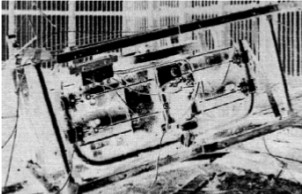
“Iris engine of the above shown biplane” (PiP)
-The Iris engine that appears in the main text, is here in its frame.
Engines of DE HAVILLAND
Model: Double Spectre
Arquitecture:
Chambers: No info
Fuels: No info
Feed System: No info
Ignition: No info
Thrust:
Weight:
Model: Ghost (jet)
Arquitecture: Turbojet
Compressor/s:
Combustion chambers:
Turbines:
Power / Thrust: --- / 5000 Lbf
Weight:

"De Havilland, Ghost"
Model: Ghost (piston)
Arquitecture: 8-cylinder V-Engine
Cooling:
Total Displacement:
Bore / Stroke:
Power: 198 HP
Weight:
Model: Gipsy King
Arquitecture: 12-cylinder Inverted V-engine
Cooling: Liquid
Total Displacement: Unknown
Bore / Stroke:
Power: 525 HP
Weight:

"De Havilland, Gipsy King supercharged"
Model: Gipsy Major, -I, -II, etc. -31, -51, etc (4 cils
Arquitecture: 4-cylinder In line inverted
Cooling:
Total Displacement:
Bore / Stroke:
Power: 130 HP
Weight:

"De Havilland, Gipsy Major 200"
Model: Gipsy Minor, -I, -II
Arquitecture: 4-cylinder In line inverted
Cooling:
Total Displacement:
Bore / Stroke:
Power: 40 HP
Weight:

"De Havilland, Gipsy minor"
Model: Gipsy Queen, -I, -II, -III, -31 a -71
Arquitecture: 6-cylinder In line inverted
Cooling:
Total Displacement:
Bore / Stroke:
Power:
Weight:

"De Havilland, Gipsy Queen 71"
Model: Gipsy Six, -I, -II, -III (6 cils.)
Arquitecture: 6-cylinder In line inverted
Cooling:
Total Displacement: Unknown
Bore / Stroke: Unknown x Unknown
Power: 205 HP @ 2350 rpm
Weight:

"De HavHavillandiland, Gipsy Six"
Model: Gipsy Twelve
Arquitecture: 12-cylinder Inverted V-engine
Cooling:
Total Displacement: Unknown
Bore / Stroke: Unknown x Unknown
Power: 545 HP
Weight:

"De Havilland, Twelve"
Model: Gipsy, -I, -II,
Arquitecture: 4-cylinder In-line
Cooling:
Total Displacement:
Bore / Stroke:
Power:
Weight:

"De Havilland, Gipsy I"
Model: Gipsy, -III
Arquitecture: 4-cylinder In line inverted
Cooling:
Total Displacement: Unknown
Bore / Stroke: Unknown x Unknown
Power: 120 HP
Weight:
Model: Gnome
Arquitecture:
Compressor/s: No info
Combustion chambers: No info
Turbines: No info
Power / Thrust: Unknown / ---
Weight:

"De Havilland, Gnôme"
Model: Goblin
Arquitecture: Turbojet
Compressor/s: One centrifugal single-sided compressor
Combustion chambers: 16 separate combustion chambers
Turbines: One single turbine
Power / Thrust: --- / 3000 Lbf
Weight:

"De Havilland, Goblin fig2"
Model: Gyron
Arquitecture:
Compressor/s: No info
Combustion chambers: No info
Turbines: No info
Power / Thrust: Unknown / ---
Weight:

"De Havilland, Gyron DGJ-2"
Model: Gyron Junior (H-6)
Arquitecture: Turbojet
Compressor/s:
Combustion chambers:
Turbines:
Power / Thrust:
Weight:
The Junior DGJ-1 gave a power of more than 3,200 Kgs. of thrust (1954).
Model: Gyron Senior
Arquitecture:
Compressor/s: No info
Combustion chambers: No info
Turbines: No info
Power / Thrust: Unknown / ---
Weight:

"De Havilland, Gyron Senior"
Model: Halford H-1
Arquitecture:
Compressor/s: No info
Combustion chambers: No info
Turbines: No info
Power / Thrust: Unknown / ---
Weight:
Model: Halford H-2
Arquitecture:
Compressor/s: No info
Combustion chambers: No info
Turbines: No info
Power / Thrust: Unknown / ---
Weight:
Model: Halford H-3
Arquitecture: Turboprop
Compressor/s: Two single-sided compressors
Combustion chambers: Several inverted-flow combustion chambers
Turbines:
Power / Thrust: 500HP / ---
Weight:

"De Havilland, H-3"
Model: Halford H-4
Arquitecture:
Compressor/s: No info
Combustion chambers: No info
Turbines: No info
Power / Thrust: Unknown / ---
Weight:
Model: Halford H-5
Arquitecture:
Compressor/s: No info
Combustion chambers: No info
Turbines: No info
Power / Thrust: Unknown / ---
Weight:
Model: Iris
Arquitecture:
Cooling:
Total Displacement: Unknown
Bore / Stroke: Unknown x Unknown
Power: Unknown
Weight:

"De Havilland, Iris"
Model: Spectre
Arquitecture: Rocket engine
Chambers:
Fuels: Hydrogen peroxide and kerosene
Feed System:
Ignition:
Thrust:
Weight:
It was really small with a length of 20 cm, a diameter of 20 cm.

"De Havilland, Double Spectre"
Model: Sprite
Arquitecture: Rocket engine
Chambers:
Fuels: Hydrogen peroxide
Feed System:
Ignition:
Thrust:
Weight:
"De Havilland, Sprite"
Model: Super Sprite
Arquitecture: Rocket engine
Chambers:
Fuels: Hydrogen peroxide and kerosene
Feed System:
Ignition:
Thrust:
Weight:
The Super Sprite was intended for military use, such as ATO (Assisted Take Off, words equivalent to the American JATO or Jet Assisted Take Off)
"De Havilland, Super Sprite"


